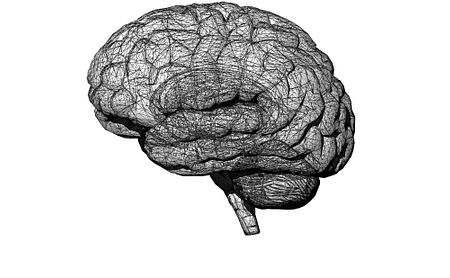Changes in Nerve Network of Brain May Cause Presence Hallucinations
Written by |

Disruptions in a network of interconnected nerves in the brain appear to underlie what are known as perception hallucinations in people with Parkinson’s disease, according to a recent study.
This finding — taken from robotic-guided movements that act as a type of “brain stress test” — supports this network as a biomarker of the likely severity of Parkinson’s-related psychosis and cognitive decline, the scientists noted. It also suggests the network as a potential target of therapy development.
The study, “Robot-induced hallucinations in Parkinson’s disease depend on altered sensorimotor processing in fronto-temporal network,” was published in the journal Science Translational Medicine.
Hallucinations are relatively common in Parkinson’s, being experienced by nearly half of all patients. They are considered risk factors for psychosis and dementia, and associate with higher mortality.
Because of this, understanding how hallucinations arise could help scientists in better treating the disorder’s cognitive decline. Hallucinations can be challenging to study, however, in part because researchers suspect they are underdiagnosed, meaning many go unreported in their earlier stages.
“An important challenge with hallucinations is that … their occurrence cannot be predicted, that many patients may not openly report them, possibly out of fear, and that it is currently very challenging for physicians to quantify their occurrence, phenomenology and intensity,” Fosco Bernasconi, PhD, a researcher at the École Polytechnique Fédérale de Lausanne (EPFL), in Switzerland, and a co-first study author, said in a university press release.
Olaf Blanke, MD, PhD, the study’s senior author, previously discovered that researchers could induce a “presence hallucination” — the sensation of another being present and nearby — in healthy individuals by having them interact with a pair of robots.
Specifically, the person performed poking gestures with one robotic arm (essentially moving that arm around), while another robotic arm imitated these motions on the person’s back, sometimes touching them in time with the motions and other times with touches not in synchrony.
When the robot’s touches were slightly delayed so to be out of sync with the person’s gestures, researchers noted that an individual began to experience presence hallucinations, which Blanke refers to as “ghosts” in the brain.
Blanke and colleagues wondered if this same process could induce presence hallucinations in people with Parkinson’s, allowing them to observe differences in neural activity between patients and healthy volunteers.
In this recent study, the researchers found the robotic intervention did induce presence hallucinations in both groups of participants. Among the 26 Parkinson’s patients, moreover, those who had these hallucinations previously reported a heightened sensitivity to the robotic stimulation.
By combining the robotic test with magnetic resonance imaging, a non-invasive means of visualizing organs like the brain, the researchers also identified a pattern of neural connectivity — nerves passing information between each other — that associated with hallucinations among healthy people, and was disrupted in individuals with Parkinson’s experiencing hallucinations.
“Adapting the robotic device and procedure to the scanner allowed us to identify a brain network that is relevant for presence hallucinations in patients with Parkinson’s disease and that could potentially serve as a biomarker for more severe forms of the disease associated with hallucinations and cognitive deficits,” said Eva Blondiaux, a PhD student and the study’s other co-first author.
This brain network includes three fronto-temporal cortical brain regions.
The network’s biomarker potential was then evaluated by imaging the brains of a separate group of 30 Parkinson’s patients. Disruptions in the network among these patients accurately predicted the severity of their symptoms, and were associated with cognitive decline.
“The results,” the team concluded, “might improve diagnosis of hallucinations in patients with [Parkinson’s] and facilitate the development of targeted therapies.”





